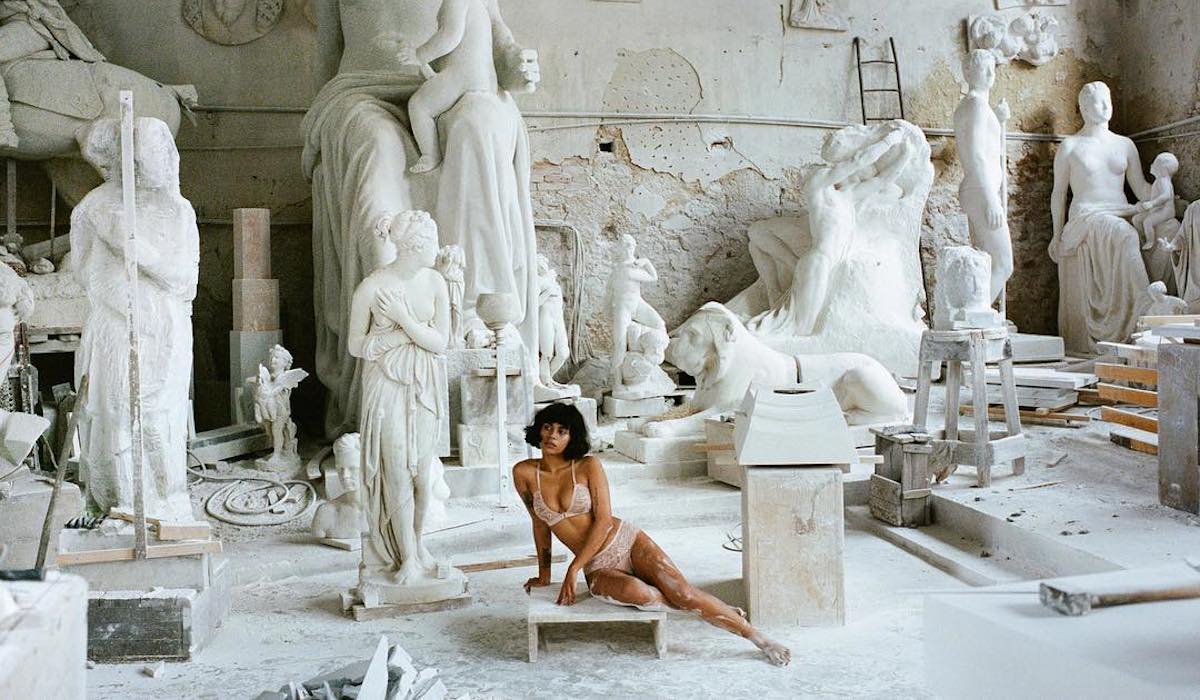I attended my first ever life drawing session in my first year at university. I was part of a group of around thirty students sat at desks that had been arranged in a horse-shoe shape, fidgeting with our pencils and paper awkwardly as the model stood before us and undressed. She was only a little older than us- still in her twenties- but she had a palpable confidence in her body beyond her years, and was so relaxed in her nakedness that I felt the entire room relax too.
The model moved through a series of poses, the first few lasting two minutes, then five or ten, with a final pose of half an hour. The time we spent sketching felt like nothing, but the proof of it was in the armfuls of drawings everyone left with: scraps of half-formed hands and torsos jostling on pages we tucked carefully into our bags.
I have always made art, have always drawn people- but the experience of creating had been a substantially solitary one until I began to attend these sessions. Here the process is communal -not only am I drawing from a real person in front of me, but I am also surrounded by people drawing together.
In a typical class, you can expect a varied skill-set; you may find yourself between someone who hasn’t touched a coloured pencil since they were a child, and someone else who did their Master’s in fine art.
If you choose to compare what you have drawn with these people (not that you have to do this! People rarely pry unless you offer to show them!) you will notice that beyond ability, there are vast differences in what you choose to record. Each perspective is distinct, in the angle from which the artist has viewed the model, and in their points of interest too; I’ve always liked to draw faces and hands, others forgo all but breasts, or shoulder blades, or stretched out legs.
This variety only increases further with every session you attend, and every new model you encounter. Each figure varies in age, gender, race, height and build- muscular, tall, thin, petite and plus-sized physiques. You begin to notice how bodies behave and move in such dissimilar ways- the same pose which forms a fold of flesh in one visibly pulls muscle taught in another.
It’s exciting to have so little time to put something down on paper, to document the limbs or the fingers or the face before the person moves and you start again. You do not have the chance to edit or alter; you don’t even have time to think about any imperfections, or what you would change -about your drawing, or about your subject- if you could.
You allow them to be, just as they are. You memorialise them and appreciate them as they move and stretch and fold, in all their human imperfection.
In this age of curated images -of Instagram beauty, selfie-culture and self-criticism; it’s so refreshing to be amongst people, especially young people, creating images which cherish the body- unedited, real, and raw.
This is one of the only public -or, sadly, private- places I can think of where the experience of seeing a nude female is not an experience of sexualization or of critique, or both.
There undeniably exists an idealised female form, one that is promoted more insidiously now than at any other time in history. Impossible hourglass silhouettes and symmetrical facial features saturate advertisements and social media feeds, alienating us from other women by entering us into a competition which we did not sign up for, with each other or with ourselves.
Life drawing helped me to dismantle that ideal in my mind- to knock the unattainable from its pedestal, and replace it with reality, in all its flawed brilliance. Why not attend a local class? See if it helps you feel more at home in your own skin.


